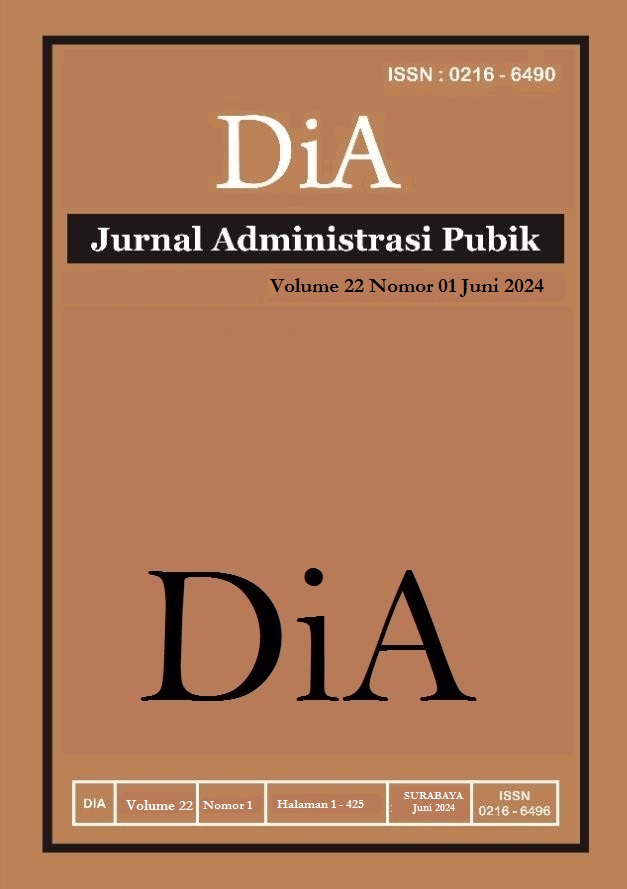THE ASSESSING THE DISTRIBUTIONAL IMPLICATION OF VAT EXEMPTIONS OF EDUCATION AND HEALTH SECTORS
DOI:
https://doi.org/10.30996/dia.v22i01.8760Keywords:
VAT, direct cash transfer, micro simulationAbstract
The tax revenues are still the primary state revenue sources in Indonesia. With the declining trend of corporate taxes, the challenge of increasing other taxes becomes even more severe, including Value Added Tax (VAT). The main change in the VAT provisions in the Law on the Harmonization of Tax Regulations is broadening the VAT basis. Among others are education and health services. This study aims to determine the effect of that policy combined with hypothetical reform on spending. Using micro simulation method and Susana’s data for March 2019, this study estimates that the imposition of VAT increases poverty and reduces the relatively small income level for consumption. In general, it estimates that the imposition of VAT in Indonesia will increase poverty, although it can reduce inequality. When receiving cash transfers, poverty and inequality decreased relatively small. These results imply that the fiscal policy of providing direct cash transfers is moderately effective in reducing poverty but not inequality.
Downloads
References
Alavuotunki, K., Haapanen, M., & Pirttilä, J. (2021). The Consequences of the Value-Added Tax on Inequality. SSRN Electronic Journal. https://doi.org/10.2139/ssrn.2924448
Alm, J. (2019). Can Indonesia Reform Its Tax System? Problems And Options. Tulane Economics Working Paper Series.
Arnold, J. (2012). Improving the Tax System in Indonesia. In OECD Economics Department Working Papers (Issue 998).
Basri, M. C., Felix, M., Hanna, R & Olken, B. A. (2021). Barro, R. J., Ursúa, J. F., & Weng, J. (2020). The Coronavirus and the Great Influenza Pandemic. American Economic Review 2021, 111(12)
Bourguignon, F., & Spadaro, A. (2006). Micro simulation as a tool for evaluating redistribution policies. Journal of Economic Inequality, 4(1). https://doi.org/10.1007/s10888-005-9012-6
Enami, A., Lustig, N., & Taqdiri, A. (2019). Fiscal policy, inequality, and poverty in Iran: assessing the impact and effectiveness of taxes and transfers. Middle East Development Journal. https://doi.org/10.1080/17938120.2019.1583510
Gasparini, L. C., & Pinto, S. M. (2006). Equality of opportunity and optimal cash and in-kind policies. Journal of Public Economics, 90(1–2). https://doi.org/10.1016/j.jpubeco.2005.03.001
Higgins, S., & Pereira, C. (2014). The Effects of Brazil's Taxation and Social Spending on the Distribution of Household Income. Public Finance Review. https://doi.org/10.1177/1091142113501714
Jellema, J., Wai-Poi, M., & Afkar, R. (2017). The Distributional Impact of Fiscal Policy in Indonesia. In The Distributional Impact of Taxes and Transfers: Evidence From Eight Developing Countries. https://doi.org/10.1596/978-1-4648-1091-6_ch5
Jouini, N., Lustig, N., Moummi, A., & Shimeles, A. (2018). Fiscal Policy, Income Redistribution, and Poverty Reduction: Evidence from Tunisia. Review of Income and Wealth. https://doi.org/10.1111/roiw.12372
Keen, M. (2014). Targeting, cascading and indirect tax design. Indian Growth and Development Review. https://doi.org/10.1108/IGDR-02-2013-0009
KEMPKF. (2021). Kerangka Ekonomi Makro dan Pokok-Pokok Kebijakan Fiskal Tahun 2021. Journal of Chemical Information and Modeling.
Lustig, N., & Higgins, S. (2013). Commitment to Equity Assessment (CEQ): Estimating the Incidence of Social Spending, Subsidies, and Taxes - Handbook. SSRN Electronic Journal. https://doi.org/10.2139/ssrn.2366810
Lustig, N. (2018). Commitment to Equity Assessment (CEQ): Estimating the Impact of Fiscal Policy on Inequality and Poverty. Brooking Institution Press.
Martinez-Aguilar, S., Fuchs, A., Ortiz-Juarez, E., & Del Carmen, G. (2017). The Impact of Fiscal Policy on Inequality and Poverty in Chile. In The Impact of Fiscal Policy on Inequality and Poverty in Chile. https://doi.org/10.1596/1813-9450-7939.
Martines-Vazquez, Jorge. (2014). The Impact of Fiscal Policy on the Poor: Fiscal Incidence Analysis. Andrew Young School of Policy Studies.
Martines-Vazquez, J., Vulovic, Violeta., & Liu, Yongzheng. (2009). Direct versus Indirect Taxation: Trends, Theory and Economic Significance. Andrew Young School of Policy Studies.
Nugraha, K., & Lewis, P. (2013). The impact of taxation on income distribution: Evidence from Indonesia. Singapore Economic Review, 58(4). https://doi.org/10.1142/S0217590813500240
Purwanto, L.,& Septycasari, E.E. (2022). Program Indonesia Pintar” Implementation for Upper Secondary Education in Mojokerto. Jurnal Administrasi Publik, 2022 June Vol. 20 No. 1.
Romer, D. (2016). Advanced macroeconomics fourth edition. In McGraw-Hill.
Rossignolo, D. (2018). Argentina Taxes, Expenditures, Poverty, and Income Distribution. Commitment to Equity Handbook. Estimating the Impact of Fiscal Policy on Inequality and Poverty.
Sancak, C., Velloso, R., & Xing, J. (2021). Tax Revenue Response to the Business Cycle. SSRN Electronic Journal. https://doi.org/10.2139/ssrn.1578669
Warwick, R., Harris, T., Phillips, D., Goldman, M., Jellema, J., Inchauste, G., & Goraus-Tańska, K. (2022). The redistributive power of cash transfers vs VAT exemptions: A multi-country study. World Development, 151. https://doi.org/10.1016/j.worlddev.2021.105742
Weeks, M., Mitton, L., & Sutherland, H. (2000). Micro simulation Modelling for Policy Analysis Challenges and Innovations. Cambridge University Press.
Downloads
Published
How to Cite
Issue
Section
License
The DiA journal allows authors to retain the copyright of their papers without limitation. Authors may grant publishers non-exclusive publishing rights to publish articles. Granting first publishing rights to publishers also qualifies as unlimited copyright (because there are no restrictions imposed by publishers on author copyright).






